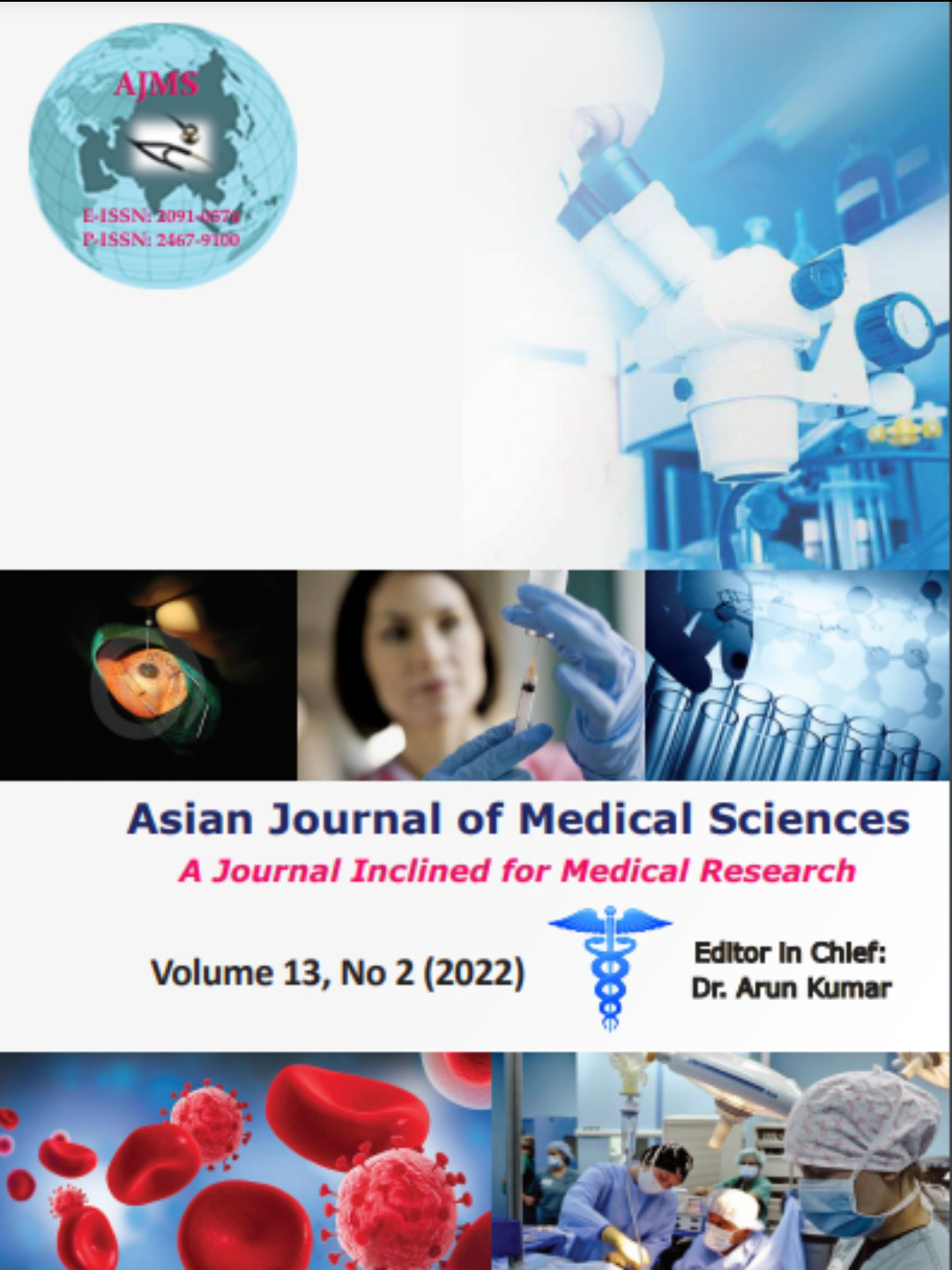Evaluation of central corneal thickness and corneal curvature in patients with rheumatoid arthritis
DOI:
https://doi.org/10.3126/ajms.v13i2.40672Keywords:
Central corneal thickness, Corneal curvature, Dry eye, Rheumatoid ArthritisAbstract
Background: Rheumatoid arthritis is an autoimmune disease. It is a chronic disease that causes symmetrical deforming type of polyarthritis. Rheumatoid arthritis most commonly involves the anterior segment of the eye. It causes keratoconjunctivitis sicca, episcleritis, scleritis, sclerosing keratitis, stromal keratitis, paracentral keratolysis, and peripheral ulcerative keratitis.
Aims and Objectives: The purpose of this study was to evaluate central corneal thickness (CCT) and corneal curvature in patients with rheumatoid arthritis. We also evaluated the association between CCT, corneal curvature, and rheumatoid arthritis severity.
Materials and Methods: A total of 49 rheumatoid arthritis patients and 49 control subjects were enrolled in this study. The study was conducted in the ophthalmology department of SRM medical college, Chennai. A detailed ophthalmological examination was performed on each subject. Dry eye evaluation was done using Shirmers test, tear breakup time, and corneal fluorescein staining. The CCT and corneal curvature were measured by ultrasonic pachymetry and auto keratorefractometer, respectively. For statistical analysis, we used chi-square test, Fisher exact test, student t-test, and ANOVA test.
Results: Mean CCT in all rheumatoid arthritis patient group eyes was 532.78±14.03 micrometers. Mean CCT in rheumatoid arthritis with dry eye was 522.3±11.10 micrometer, in rheumatoid arthritis without dry eye was 536.90±11.60 micrometer and control patients’ group was 564.80±20 micrometer respectively. The difference of CCT was found to be statistically significant (P<0.05) between rheumatoid arthritis and control eyes. Mean corneal curvature was 42.71D±2.16 in all rheumatoid arthritis patients. Mean corneal curvature was 42.7D±1.6 in rheumatoid arthritis with dry eye, 42.8D±2.5 in rheumatoid arthritis without dry eye, and 42.5D±2.1 in control eye, respectively. Our result did not show statistically significant difference in corneal curvature between the rheumatoid arthritis patients and control patients. CCT and corneal curvature were not associated with rheumatoid arthritis activity and rheumatoid arthritis duration.
Conclusion: The CCT was thinner in rheumatoid arthritis patients than control patients. In order to improve the quality of vision of rheumatoid arthritis patients, we suggest including pachymetry as a routine ophthalmic examination in them. Pachymetry will be helpful in diagnosing and guiding clinical treatment in these patients.
Downloads
116
197
Downloads
Published
How to Cite
Issue
Section
License
Copyright (c) 2022 Asian Journal of Medical Sciences

This work is licensed under a Creative Commons Attribution-NonCommercial 4.0 International License.
Authors who publish with this journal agree to the following terms:
- The journal holds copyright and publishes the work under a Creative Commons CC-BY-NC license that permits use, distribution and reprduction in any medium, provided the original work is properly cited and is not used for commercial purposes. The journal should be recognised as the original publisher of this work.
- Authors are able to enter into separate, additional contractual arrangements for the non-exclusive distribution of the journal's published version of the work (e.g., post it to an institutional repository or publish it in a book), with an acknowledgement of its initial publication in this journal.
- Authors are permitted and encouraged to post their work online (e.g., in institutional repositories or on their website) prior to and during the submission process, as it can lead to productive exchanges, as well as earlier and greater citation of published work (See The Effect of Open Access).




